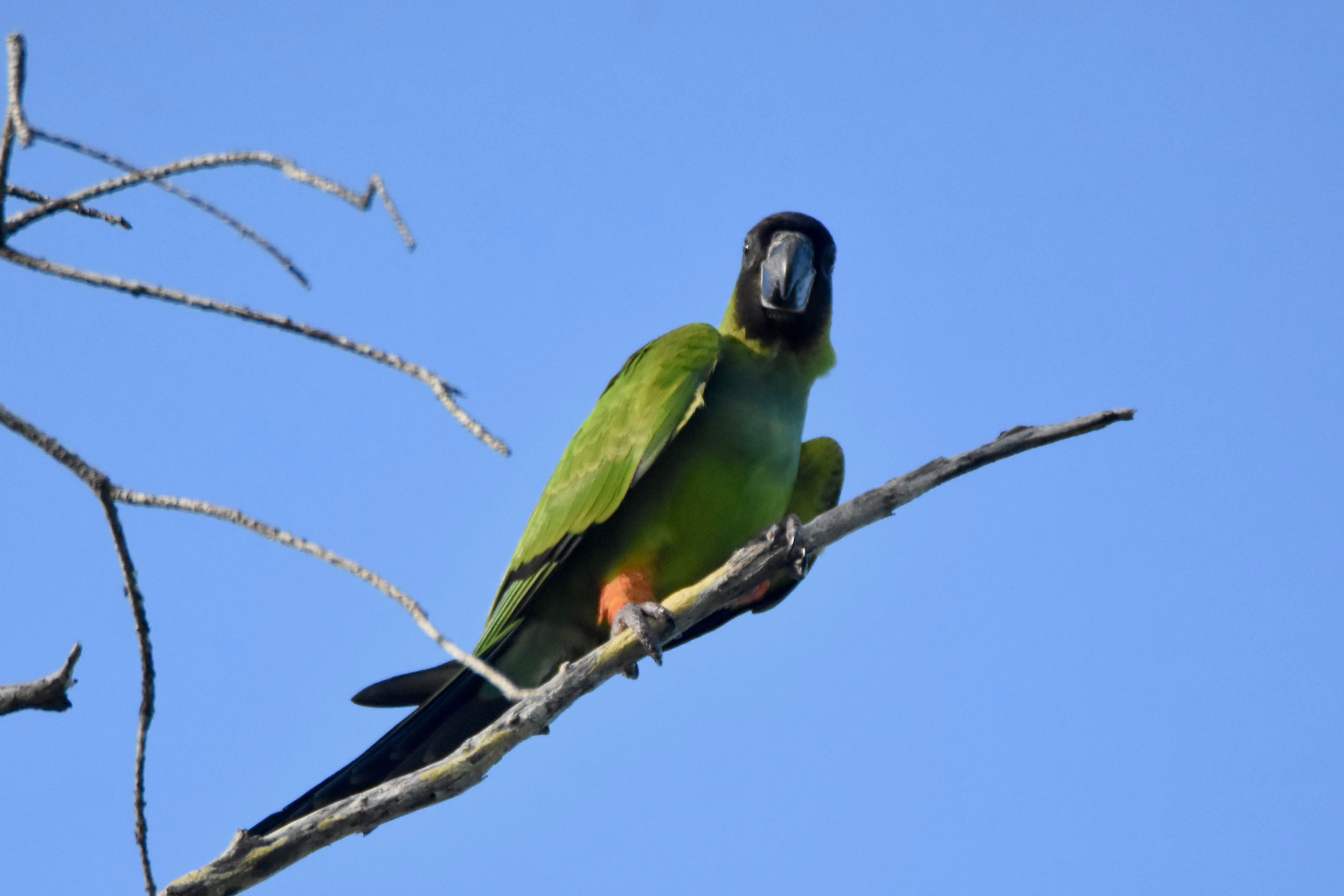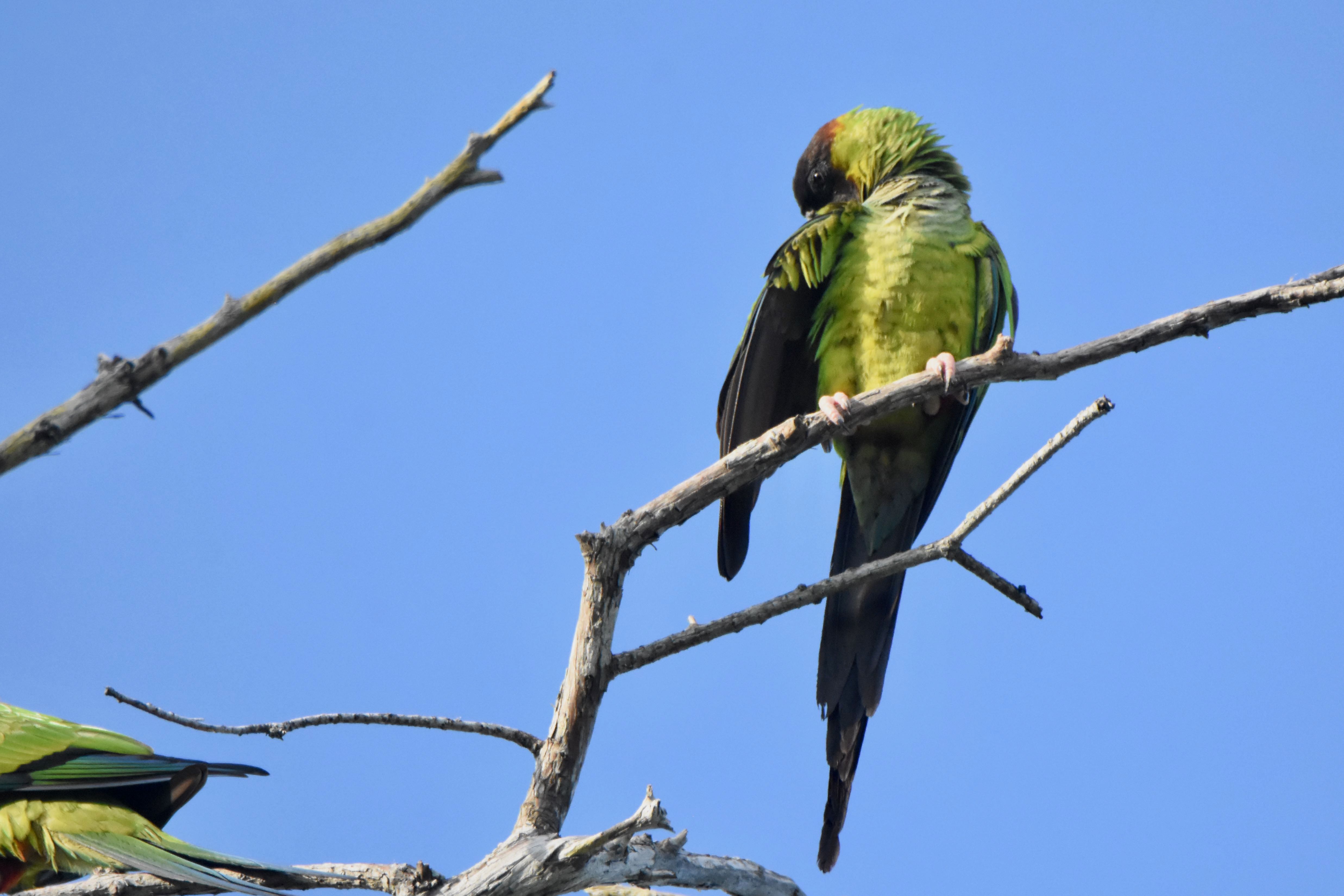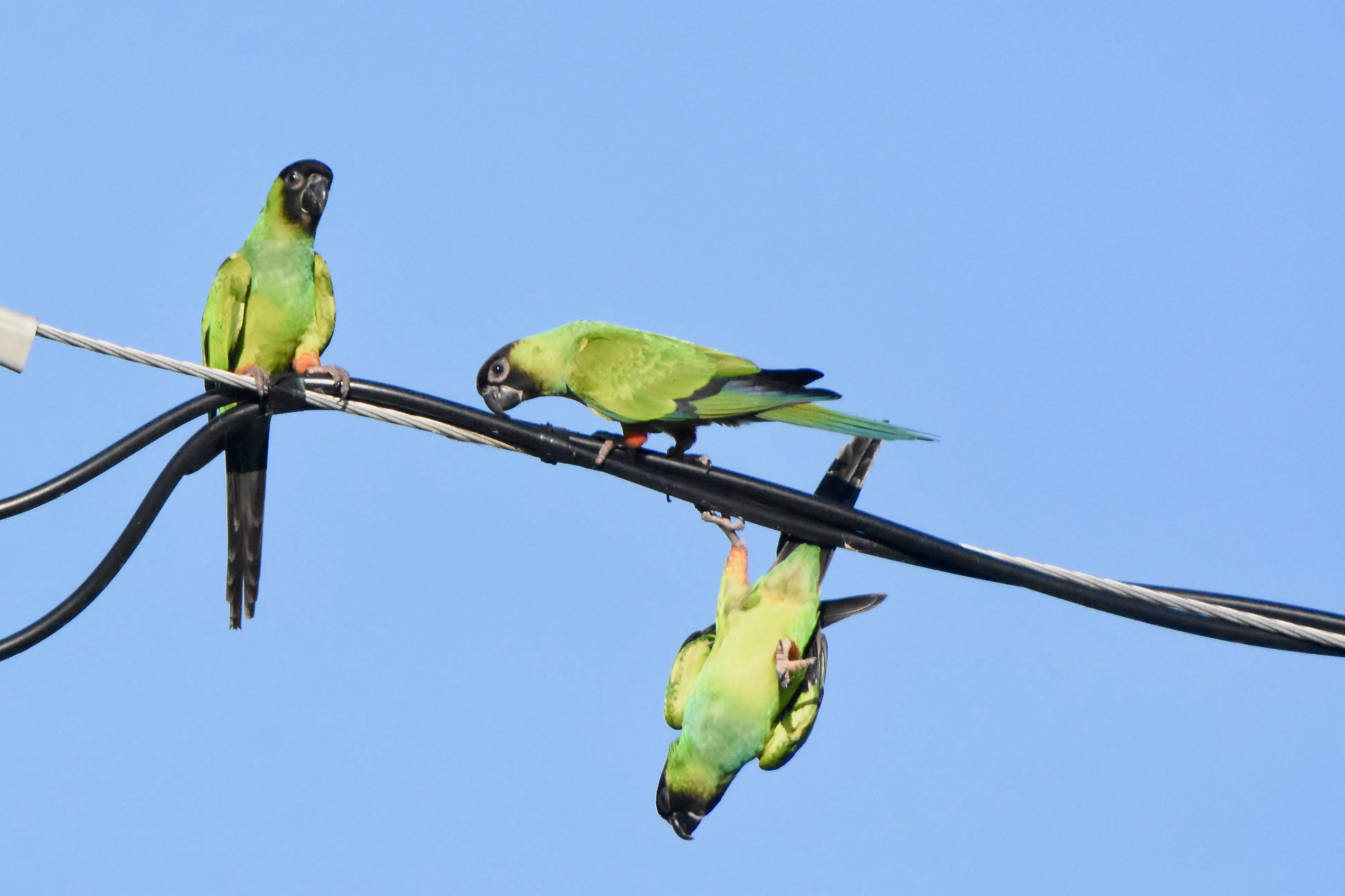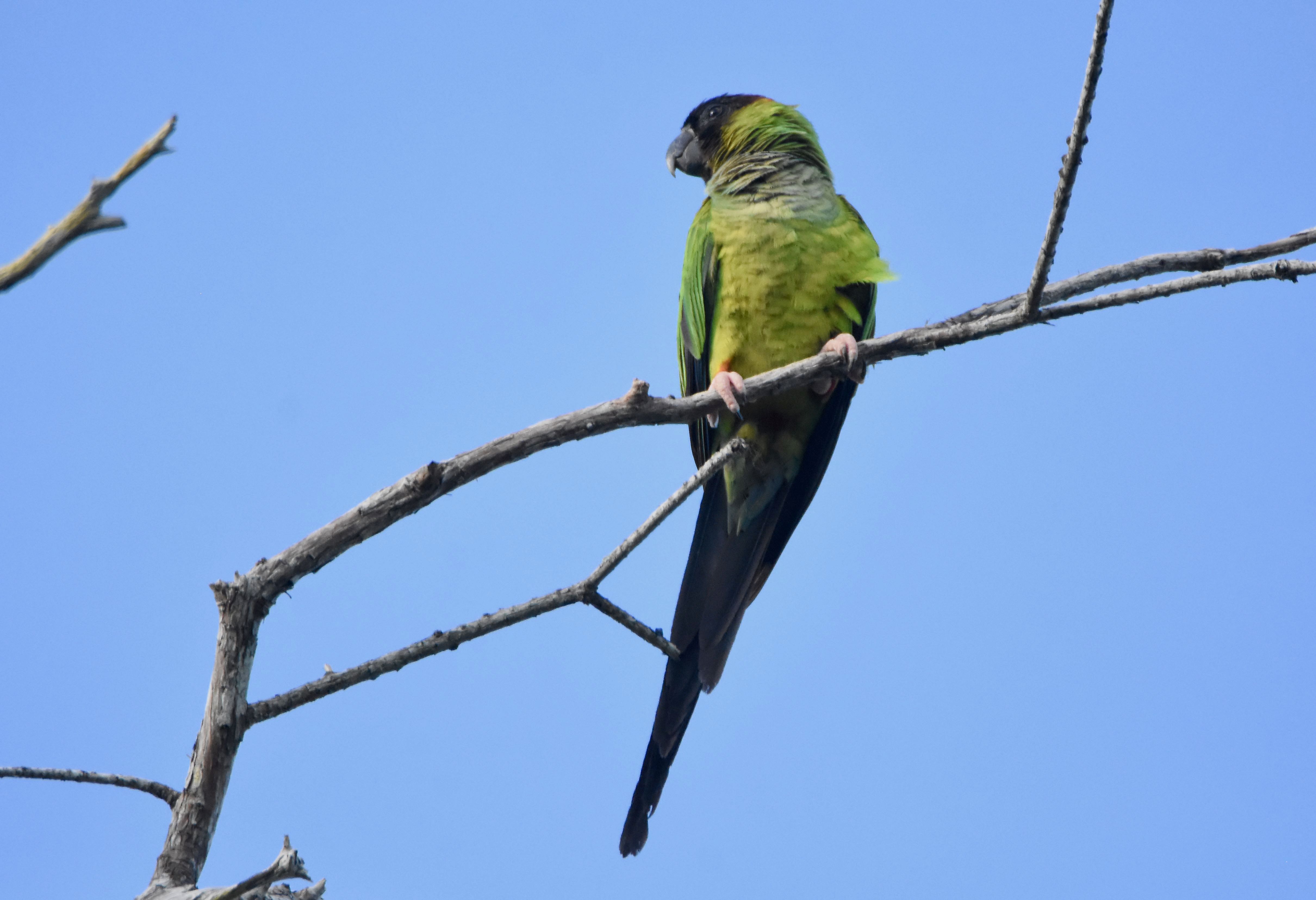
Nanday Parakeet, photographed at West Delray Regional Park, Delray Beach, Palm Beach County, in July 2018.
The nanday parakeet, Aratinga Nenday, is one of the older members of Florida's large and expanding exotic bird club. It's a native of South America that has flourished in the wilds of Florida for nearly half a century.
It's a medium-sized parrot, mostly green but with a distinctive black face and head. It's the only parrot with a black head, which gives rise to a second common name, the black-hooded parakeet. It's also known as the nanday conure.
Nanday parakeets are native to the part of central South America where Bolivia, Brazil, Paraguay and Argentina come together. Favorite habitats include a variety of woodlands and palm stands. They're nonmigratory, but they will wander in flocks wide and far in search of food.
They're intelligent birds and are reputed to be good pets, which is how they became part of Florida's wild scene. Nandays were first seen flying "wild" in St. Petersburg and Pinellas County back in 1969, most likely an escapee from a pet store or owner, or deliberately released. By the 1980s, their numbers in the wild began to explode, and they started showing up in different parts of Florida, including Miami and as far north as Palm Beach County.
Even into the 1990s, experts weren't quite convinced that nandays were reproducing in the wild. But in 1992, Congress passed the federal Wild Bird Conservation Act, banning their import, which all but ruled out the possibility that the wild nanday population growth was totally fueled by escapees and releases.
There's also a large nanday population in Los Angeles and small populations in Phoenix, New York, Texas and other parts of Florida. The New York group shows the bird's adaptability.
Nanday's are medium-sized parakeets, with a body that can be between a foot and 14 inches long and a wingspan of about two feet. The black head and green body are the basic identifiers, but they also have yellow eye rings, a tinge of blue in the chest and wings, and bright, reddish-orange "cuffs" on their legs. They also have long, tapered tails.
They are largely ground foragers and palm nuts, seeds, flowers and flower buds are on their menu. Because nandays are known to travel in large flocks, some fear them as agricultural pests. Tennessee, in fact, has banned them because of that possibility. They are loud birds, with an annoying call similar to their exotic cousins, the monk parakeet. There are something like 20 species of exotic parakeets living in Florida, but nandays are unique in one sense. They are the only exotic parakeet that's at home in deep woods as well as cities and 'burbs.
Nandays nest in tree cavities, and that's one critical resource where they compete with native birds, including woodpeckers. Females lay clutches of two to five eggs, which require 21 to 23 days of incubation before hatching. All sitting is done by Mom. They fledge at about 56 days.
Nandays are members of Psittacidae, the parrot family. An alternate scientific name: Nandayus nenday.
West Delray Regional Park



